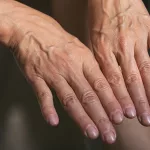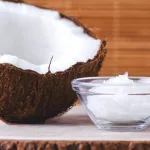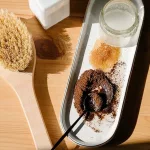Consider putting together a small kit to have on hand for when mastitis appears. You may also want to consult a lactation specialist to see if any adjustments to your breastfeeding routine could help prevent future flare-ups.

Being a new parent is demanding. You might feel wiped out most days. If you’re feeling unwell, though, it’s possible that sleepless nights aren’t the only cause.
Mastitis is inflammation of breast tissue that commonly affects breastfeeding parents. Alongside breast tenderness and warmth, you can experience flu-like symptoms and, if not treated, a bacterial infection.
Concerned about continuing to breastfeed? The reassuring news is you often don’t have to stop. Frequent nursing can actually speed recovery and help you feel better sooner.
Antibiotics can be beneficial but aren’t always required when mastitis is caught early and managed properly. And if you do need antibiotics, it usually doesn’t mean you must discontinue breastfeeding.
Below is how to identify mastitis and manage it at home, plus guidance on when to seek medical attention.
Related: What is a breast infection?
What is mastitis and what triggers it?
Mastitis involves inflammation of the breast tissue and can evolve into a bacterial infection if not addressed promptly.
Mastitis may affect only one breast at a time, and occasionally both. In breastfeeding people, it’s referred to as lactation mastitis.
Typically, mastitis begins when milk pools in a section of the breast, becomes stagnant, and then gets infected. This can occur with persistent engorgement. Alternatively, bacteria can enter through cracked nipples or other skin breaks.
Other contributors to mastitis include:
- external pressure on the breasts
- excessive stress
- weaning too abruptly
- overproduction of milk
Common symptoms are:
- breast pain, swelling, redness, or warmth
- nipple discharge
- a firm lump in the breast tissue
- aches, chills, fatigue, and other flu-like symptoms
- reduced milk output from the affected breast
- fever
Risk factors include a prior history of mastitis, cracked nipples, or wearing a constrictive bra. Improper latch, poor nutrition, and smoking also raise the likelihood of developing mastitis.
Symptoms can come on fairly suddenly. If you feel off, pay attention and act early.
Home treatments for mastitis
Contact your healthcare provider or a lactation consultant if you suspect mastitis. There are home strategies that may resolve it before it becomes a serious infection. If these measures don’t help within 24 to 48 hours, see your doctor.
1. Rest
Rest and self-care are crucial when you have mastitis. It can be hard to slow down while caring for an infant, but try to rest or at least reduce your activity as much as possible.
If feasible, ask your partner to take time off work or recruit a friend or relative to help so you can concentrate on recovery.
Don’t feel bad — breastfeeding is challenging, and you need rest to heal.
2. Frequent nursing
While resting, try to hold your baby close and offer the breast frequently, ideally every 2 hours during the day.
Begin nursing on the sore side first, but offer both breasts so the other one doesn’t become engorged. Babies often suck more vigorously at the start of a feeding, and that suction helps clear blockages and relieve mastitis.
You may worry that mastitis affects your milk’s safety. However, experts state that your milk remains safe for your baby. Frequent nursing and keeping milk flowing is one of the best defenses.
3. Vary feeding positions
Try changing the way you hold your baby while nursing. If you usually use the cradle hold, switch to a football hold or try side-lying in bed. Different positions change the angle of suction and can help free clogged ducts.
- Side-lying: Lie on your side with your baby facing your breast. Support your baby with one hand and guide the breast with the other. Once latched, rest your head on your free arm and bring your baby closer with the other.
- Football hold: Tuck your baby along your side, supporting them with your arm. For feeding on the left, hold your baby with your left arm and use your right hand to offer the breast while guiding the head with the left.
La Leche League International recommends experimenting with multiple positions to ease mastitis. They even suggest trying positions that let gravity and different angles help clear blockages. Use what works best for you.
Related: The 4 best breastfeeding positions for you and baby
4. OTC pain relief
You don’t have to endure pain, fever, or swelling.
Over-the-counter pain relievers like acetaminophen (Tylenol) or ibuprofen (Advil) are generally considered safe for people who are nursing and can provide relief. Ask your doctor or pharmacist if you’re unsure which options are appropriate while breastfeeding.
Unless directed otherwise, take only one medication at a time and follow label instructions for dosing.
5. Cabbage leaves
Cabbage leaves are a traditional remedy for breastfeeding discomfort. For mastitis, they can ease pain and inflammation. A study found that cool cabbage leaves are as effective as warm compresses for breast soreness and engorgement.
How to use them:
- Place clean, dry green cabbage leaves in the refrigerator. Trim to fit your breast if needed.
- Cover your breast with the leaves while keeping the nipple exposed. You can also tuck leaves into a loose bra for convenience.
- Remove after about 20 minutes or when they warm up.
- Wash and pat your breasts dry, discard used leaves, and use fresh ones if repeating.
Repeat up to three times a day for 20 minutes each session. Since cabbage leaves can reduce milk supply, stick to the recommended timing if you plan to keep breastfeeding.
Related: The breastfeeding mom’s guide to using cabbage leaves
6. Essential oils
Studies suggest essential oils might help with mastitis. For instance, tea tree oil contains terpinen-4-ol, which has antibacterial, antifungal, and anti-inflammatory effects. Apply diluted tea tree oil mixed with a carrier oil like olive or almond oil for topical use.
Because tea tree oil is toxic if ingested, rinse any areas that could touch your baby’s mouth before nursing. Keep essential oils stored out of your baby’s reach.
7. Garlic
Raw garlic has natural antimicrobial properties and may act as a broad-spectrum antibacterial agent while boosting the immune response. The raw cloves are more effective than typical powdered supplements.
Chop a couple of cloves into small pieces and swallow them as you would a capsule. If the taste is strong, have orange juice or milk available to neutralize the flavor.
Note that consuming raw garlic while breastfeeding can cause some infants to be gassier.
8. Vitamin C
Vitamin C supports tissue healing and restores antioxidants in the body. Research indicates vitamin C can help treat mastitis in cattle, but more studies are needed in humans.
Always consult your physician before starting supplements to ensure they won’t interact with medications.
You can also boost vitamin C intake through foods such as:
- oranges
- red bell peppers
- kiwi
- broccoli
- Brussels sprouts
- potatoes
- cauliflower
- tomatoes
Related: 7 impressive ways vitamin C benefits your body
9. Stay hydrated
When uncertain, drink more fluids. Fluid needs rise considerably while breastfeeding, and you may be unknowingly dehydrated.
Good hydration supports milk production, which increases feeding frequency and opportunities to clear blockages.
Experts advise about 16 cups of fluids per day while nursing. Fluids don’t have to be plain water — milk, juice, herbal tea, and moderate amounts of coffee or soda count too.
Related: 12 simple ways to drink more water
Also consider practical home remedies that can complement these measures.
When to consult a doctor for mastitis
If symptoms persist or you’re worried after one to two days of home care, contact your healthcare provider. You may require antibiotics to clear an infection. Your doctor can prescribe a medication that’s compatible with breastfeeding so you can continue nursing.
Watch for these warning signs:
- fever of 101°F (38.3°C) or higher
- pus or blood in your breast milk
- red streaks on the breast extending toward the armpit
- breasts that are red, hot, or markedly swollen
- cracked nipples showing signs of infection
- chills or worsening flu-like symptoms
If your condition isn’t improving and seems to be getting worse, see your physician. Without treatment, an infection can advance to an abscess — a pus-filled pocket in the breast that often requires drainage and can interfere with breastfeeding from the affected side.
Related: Subareolar breast abscess
The takeaway
There are several steps you can take at the first signs of mastitis. Try the remedies above and hopefully one will bring you relief quickly. If not, contact your doctor for evaluation. Antibiotics can be effective and typically don’t necessitate stopping breastfeeding.
If you frequently experience mastitis, assemble a preparedness kit and consult a lactation consultant to identify small changes in your nursing routine that might prevent recurrences.


















Leave a Reply
You must be logged in to post a comment.